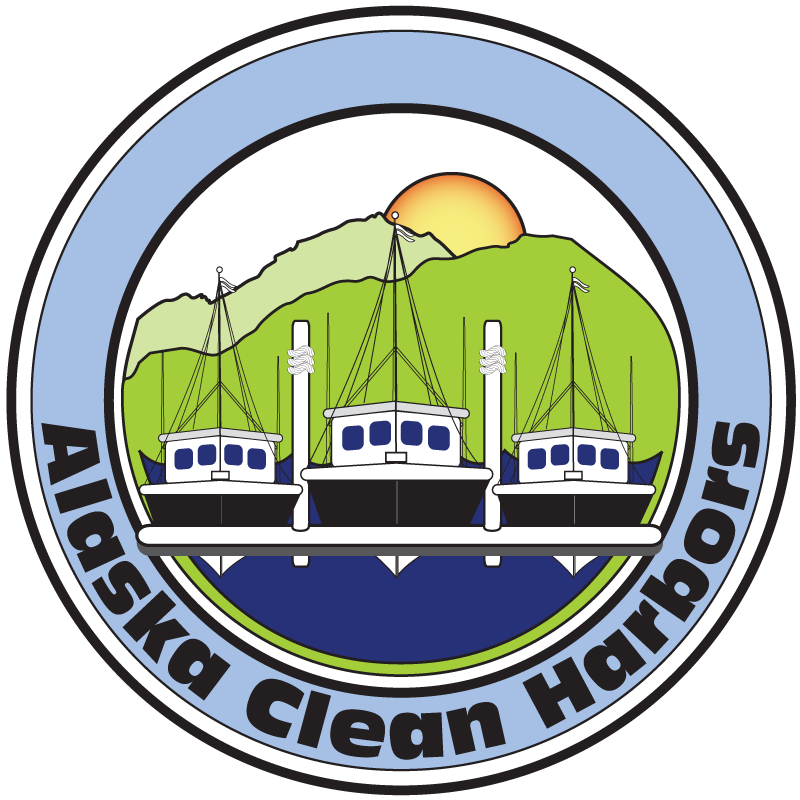Here is the final write-up of the results from the Clean Harbors survey given to Harbor Staff, Harbor Users, and Community Members.
Clean Harbor Survey Results Presented at COMFISH 2022
Here is the presentation that Tav Ammu, Alaska Sea Grant Fellow, gave at COMFISH 2022 in Kodiak, Alaska.
Clean Harbors Presentation
Tav Ammu, Alaska Sea Grant Fellow for Clean Harbors, presented to the members of the Alaska Association of Harbormasters and Port Administrators annual conference in October 2021.
Check out his presentation here.
There are 90 harbors in Alaska. How clean is yours?
Tav Ammu, Alaska Sea Grant State Fellow
The Alaska Department of Environmental Conservation (ADEC) and Alaska Sea Grant are asking Alaskan boaters, harbor users, and community members to participate in a survey aimed at improving pollution prevention in Alaska’s marine environment.
Since 2010, the Alaska Clean Harbors program has sought to reduce pollution and share best practices for ports and harbors around the state. Through outreach, grants and open discourse, this voluntary program guides managers of harbors and ports interested in keeping Alaska’s waterways healthy and clean. In 2016 there were five harbors that were certified as Clean Harbors and an additional five that had pledged interest in also becoming certified. This is a step in the right direction, but as there are 90 harbors in Alaska, a renewed energy is needed. The program’s administrative funding ended in 2017. Alan Sorum, with the Prince William Sound Regional Citizens Advisory Council, is helping to keep the program going.
To become certified as an Alaska Clean Harbor, representatives of the harbor must conduct a self-assessment on the harbor based on proven best management practices, covering seven areas vital to supporting environmentally safe harbors. One of the areas is sewage and pump-out facility operation. While many harbors have sewage or pump-out facilities, not all do.
In 2017, Alaska Clean Harbors surveyed harbor users (including recreational, tourism, and commercial and charter fishing) about sewage management practices and availability of pump-out stations. Jen Dillon, the survey lead, said the survey revealed a need to get more information about the program out to boaters, particularly in places where pollution is a problem. The survey revealed a lack of understanding of sewage discharge rules and regulations, and that people do not know where to go for information on proper disposal. This problem is a renewed focus of research, outreach, and education by ADEC and Alaska Sea Grant.
Starting in 2015, ADEC has been conducting a water quality assessment project that expanded last year to 16 Alaskan ports and harbors. Within each port sampling occurs at multiple locations for multiple parameters. Fecal coliform bacteria were found to exceed Water Quality Standard numeric criteria in some Southcentral and Southeast ports, often at sites in or near small boat harbors. The source of the bacteria is unknown at this time. The study represents less than 20% of the state’s ports and harbors and is ongoing.
ADEC and Alaska Sea Grant are now seeking information from harbormasters, boaters, and community members throughout Alaska about current conditions, practices, and concerns. Through this better understanding, state regulators and harbormasters could focus their efforts on areas of greatest need and allow managers to develop local solutions to pollution control based on the needs and concerns of boaters and the broader community. Those with an interest in boating, ports and harbors, or the marine environments affected by these activities are encouraged to take the short, 7-minute survey.
Take the survey for boat users
Take the survey for residents who do not own boats
